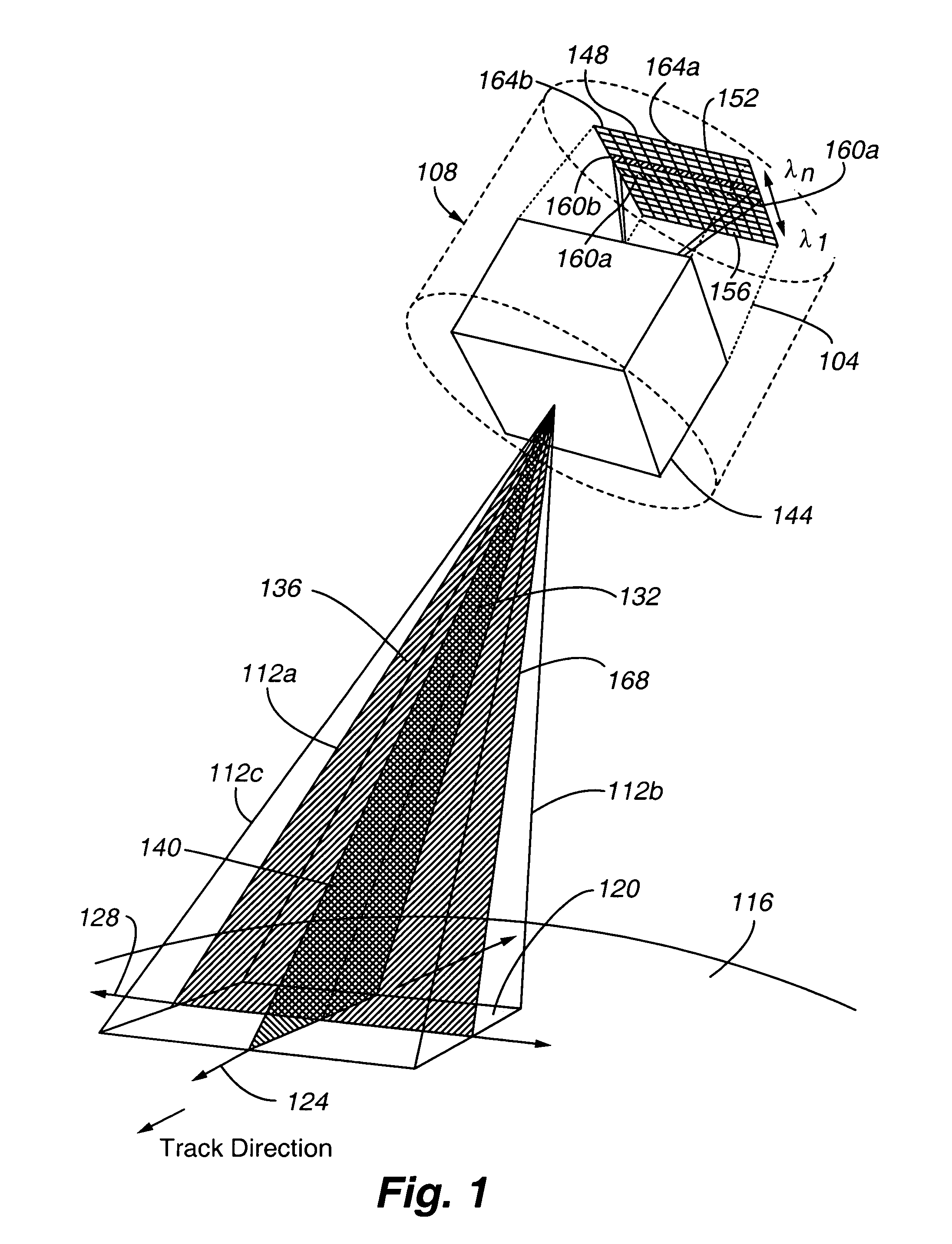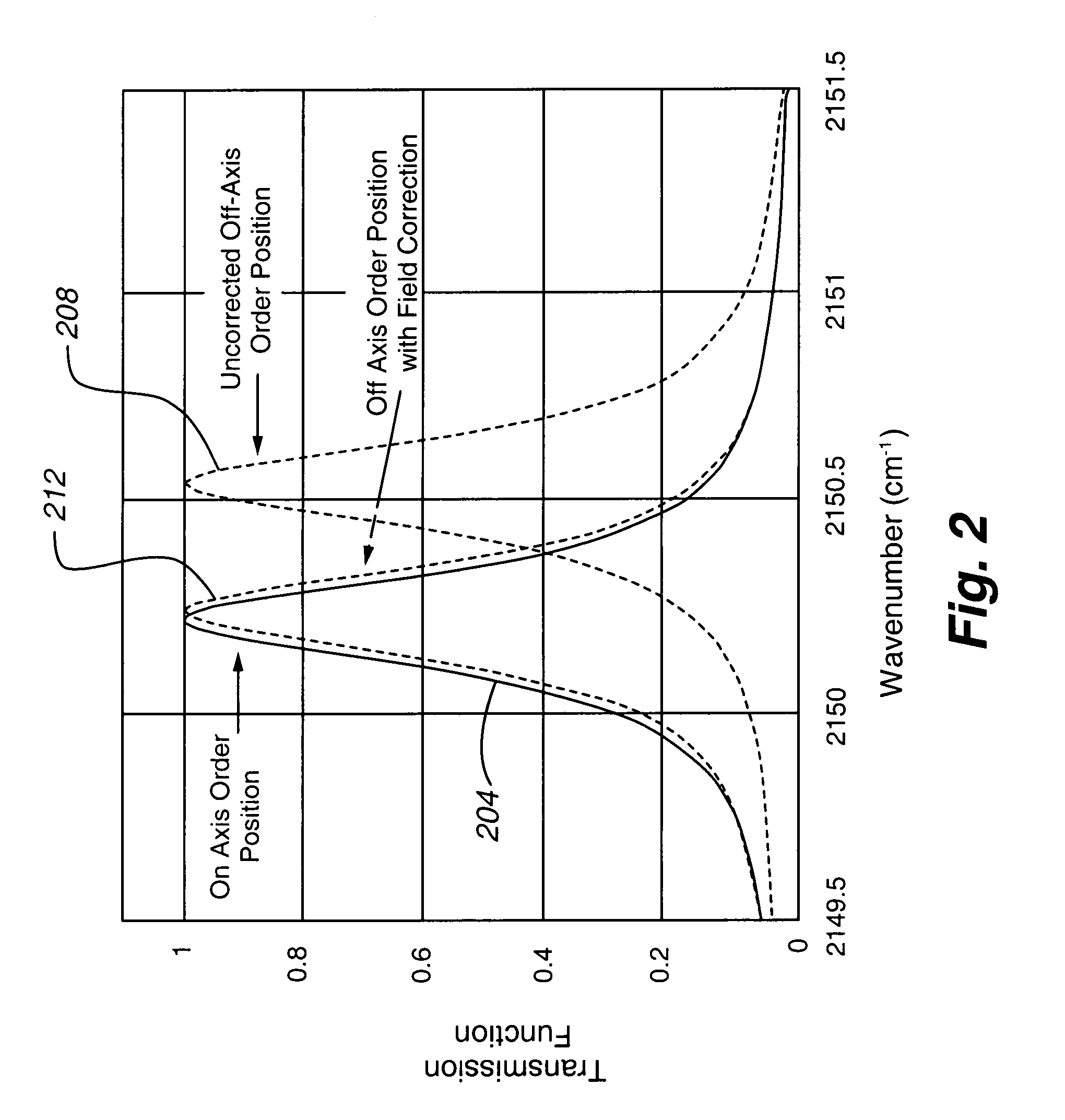Field condensing imaging system for remote sensing of atmospheric trace gases
a field condensing imaging and remote sensing technology, applied in the field of remote sensing of atmospheric trace gases, can solve the problems of reducing the scan efficiency of the scanning mechanism, reducing the signal integration time, and limited field of view over which a fabry-perot interferometer can provide accurate measurements, so as to achieve the effect of reliably maintaining filter performan
- Summary
- Abstract
- Description
- Claims
- Application Information
AI Technical Summary
Benefits of technology
Problems solved by technology
Method used
Image
Examples
example 1
[0059]This example correlation filter 408 utilizes a single etalon. In particular, the design utilizes a solid silicon etalon 1004 that is 386.55 um thick with a total of 39 layers of Ge and SiO, with 9 layers 1008 deposited on the front side and 30 layers 1012 deposited on the back side of the etalon 1004 as shown conceptually in FIG. 10. Silicon provides a high refractive index, good thermal properties and good optical quality pieces are widely available. Preliminary prototype etalon fabrication studies show that silicon etalons can be made to precise thickness (+ / −0.3 um of target thickness). As can be appreciated by one of skill in the art, minor corrections of thickness errors can be made through temperature tuning to effect a change in the optical path length. In addition, surface roughness of 2.5 nm and local parallelism of 1016. The substrate 1016 can be wedged and have an anti-reflective coating 1020 applied on the exit face to minimize its interaction with the filter, redu...
example 2
[0064]This example correlation filter 408, depicted in FIG. 13, uses a series of asymmetric Ge / SiO spacer and coupling layers 1304 having non-quarterwave thickness. This represents a departure from the periodic design approach of the prior art for producing interference filters with multiple peaks. The change in spectral line spacing of linear molecules CO and CO2 is cubic in nature requiring a higher degree of design freedom than allowed for by a periodic structure. Allowing the design to be asymmetric with non-quarterwave layer thickness provides the needed additional degrees of freedom. The filter stack 1304 can be deposited onto a thick Ge substrate 1308 to make the filter shock and vibration tolerant. Desirable features for the filter include positions of peak transmission that coincide with the CO line centers' peak positions, and film transmission between peaks. The design goal was to match 4 to 5 orders within + / −0.05 cm−1. Reducing the number of target lines matched by the ...
PUM
 Login to View More
Login to View More Abstract
Description
Claims
Application Information
 Login to View More
Login to View More - R&D
- Intellectual Property
- Life Sciences
- Materials
- Tech Scout
- Unparalleled Data Quality
- Higher Quality Content
- 60% Fewer Hallucinations
Browse by: Latest US Patents, China's latest patents, Technical Efficacy Thesaurus, Application Domain, Technology Topic, Popular Technical Reports.
© 2025 PatSnap. All rights reserved.Legal|Privacy policy|Modern Slavery Act Transparency Statement|Sitemap|About US| Contact US: help@patsnap.com



